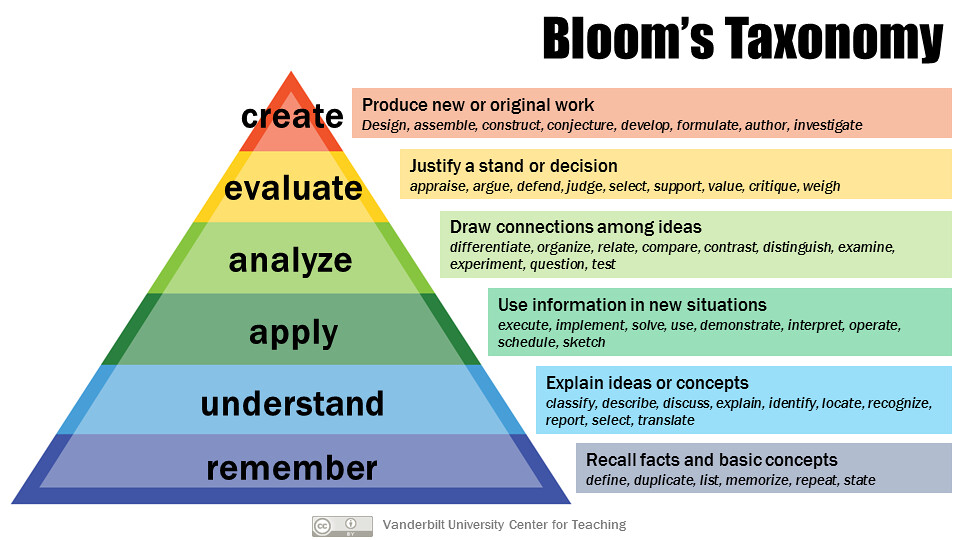
Has this happened to you?
- You got your assignment and read the directions, but you are still unsure about where to begin or what is being asked.
- In class, your instructor asks you a question and you thought you answered it correctly, but then you hear, “Almost, that’s not quite right.”
It’s possible you overlooked some key words that can help you decode exactly what the instructor is looking for. Are you being asked to recall something from memory, compare two ideas, or analyze an approach? The key is in the verb that is being used.
Activity: Let’s begin by taking apart a sample assignment. Look at this helpful video from the Learning Center at the University of North Carolina.
- Did you notice the key steps in understanding the assignment, from the introduction to locating key questions to answer, identifying key verbs, to finding tips for writing the paper? These are important steps; providing you a checklist for before, during, and after the assignment.
- Do you remember when the speaker circled the verb “analyze?” Do you know what is involved in doing an analysis? There are certain thinking skills that are necessary to learn effectively, and often, it goes beyond memorization.
Activity: Benjamin Bloom was an educational psychologist known for his research on identifying the levels of cognitive processes. Bloom’s Taxonomy (see Figure 2), highlights six levels of thinking ranging from the lowest level of remembering to the highest, more complex process of creating.
 Figure 1: Bloom’s Taxonomy (The Vanderbilt University Center for Teaching)
Figure 1: Bloom’s Taxonomy (The Vanderbilt University Center for Teaching)
Pay close attention to these verbs on your homework assignments, exams, and, even in class, when the teacher asks questions. Sometimes we revert to the lowest level because it involves the easiest act of just remembering, when in fact, your instructor may be asking you to think more deeply.
For example, maybe you were asked to apply an idea, or to evaluate an argument? Look at the Bloom’s Taxonomy diagram above and you can see the difference in these six levels. Now go back to the video and see if you can determine what you really need to do when you’re asked to “analyze the Empire’s decline and fall.”
Next steps
- Carefully analyze the key components of your assignment. Remember the steps in the “Understanding Assignments” video.
- When you are asked a question in class, listen carefully and find the key verb in the question. This action will help you in answering the question with the correct response.
- Many of your online and face-to-face courses use a discussion board. When you are asked to submit a question, think of using the Bloom’s Taxonomy. More interesting discussions may occur when you write a question that uses some of the verbs from the higher levels of thinking.
- Consider visiting our campus Writer’s Workshop. The Writer’s Workshop has many helpful resources and offers private consultations.
- Make the most of each study session with these simple strategies.
- Learning is a critical skill necessary for academic and professional success – keep on learning how to learn!